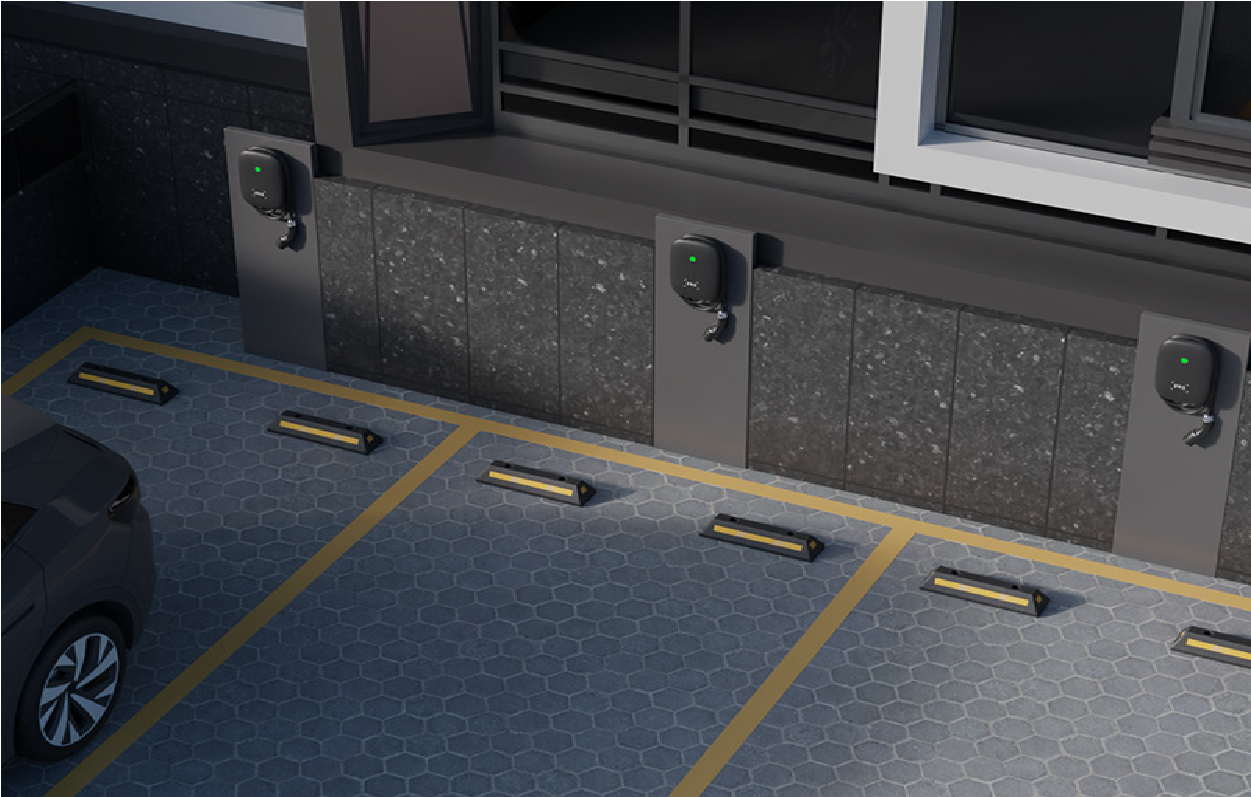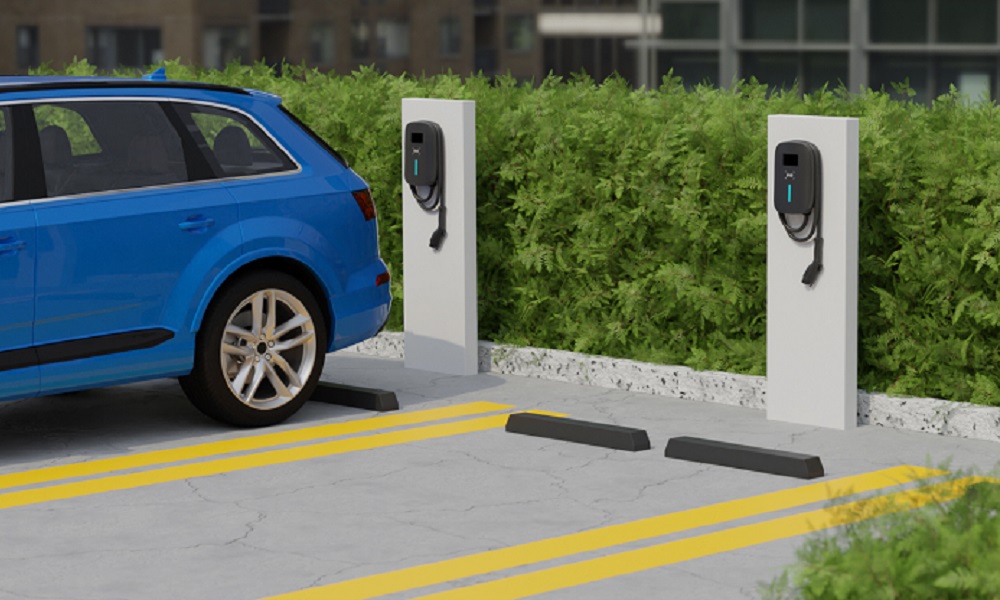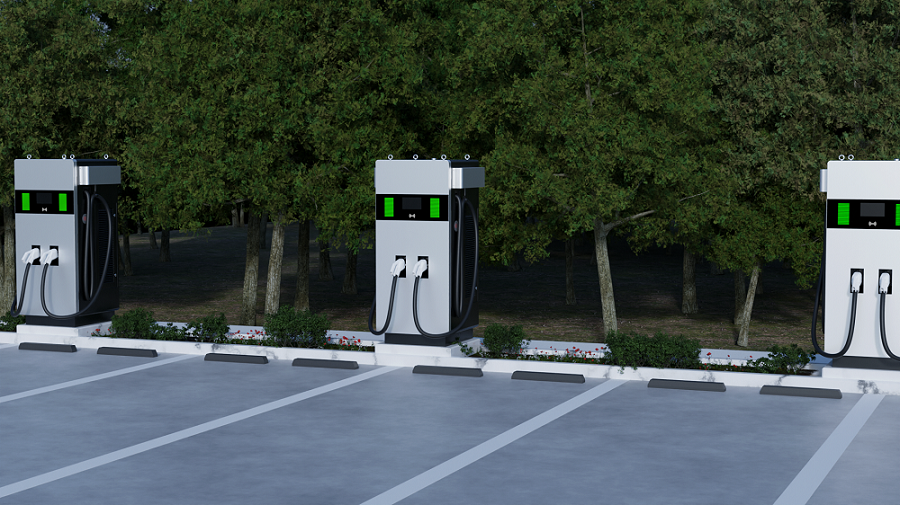
Electric vehicles dominate the automotive industry as the preferred choice for future mobility. Commercial car parks offer an excellent opportunity to meet the demand for convenient and efficient charging infrastructure. This article looks at how to choose the right level of charging for your commercial car park and how to install electric vehicle charging posts in your commercial car parks.
Understanding EV charging levels
Understanding EV charger levels can help determine the proper charge level for your parking lot. In the North American market, EV charging stations are categorized into three primary levels: level 1, level 2, and level 3. Here is a brief overview of these three EV charger types.
Level 1 EV Chargers:
Level 1 chargers are the most basic type of charging device, usually using a standard household outlet, and their charging power is typically 1.4 kW to 2.4 kW. This type of charging is suitable for everyday household use and is mainly used for charging regular EVs, for example, to replenish power when parking at night. Due to its lower power, charging is relatively slow and may take several hours or more to charge the battery fully.
Level 2 EV Chargers
Level 2 chargers have higher charging power, usually between 7 and 22 kW. This type of charging equipment is standard in residential, commercial, and public charging stations. Due to the increased power, Level 2 chargers, such as those found in shopping centers, restaurants, or car parks, can charge EVs more quickly and are suitable for faster charging.
Level 3 EV chargers (DC fast chargers):
Level 3 chargers, also known as DC fast chargers, are the highest-speed charging devices. They are available in various power levels, typically between 50 and 350 kW. Level 3 charging stations, such as motorway service areas, are mainly used for long journeys or where power needs to be replenished quickly. However, Level 3 charging stations are more expensive to build and maintain, often requiring specialized equipment and grid support. Therefore, they may not be as widespread as Level 1 and Level 2 charging facilities in terms of coverage and popularity.
Now that we've covered the basics of EV charging levels, let's explore the process of installing an EV charger in a commercial car park.

How to install an EV charger in a commercial parking lot
Installing an EV charger in a retail car park requires careful planning, considering factors such as choosing the right charging station, identifying the best location, and ensuring compliance with local regulations.
When considering an EV charger for your commercial car park, focus on the following areas:
1. Conduct an initial assessment:
The initial assessment for installing EV chargers in commercial car parks is the first step toward a successful project. Firstly, you should understand the car park's electrical facilities and grid capacity. This includes looking at the current power distribution, assessing the car park's cabling and power connection capacity, and ensuring that the charging equipment is capable of meeting the changing needs of the users. It's also essential to identify the target user group, understand their charging needs, and define the business model to ensure a return on investment.
2. Choose the right commercial charging equipment:
Select the appropriate and sufficient number of commercial EV chargers, depending on your commercial car park size. Generally speaking, commercial car parks can install Level 2 chargers and Level 3 DC fast chargers, depending on the car park's positioning, user groups, and charging needs. Consider future expansion and technology upgrades, and choose flexible and scalable equipment. You can seek help from EV charger manufacturers who will tailor an EV charging solution for your car park's capacity and expected demand.
3. Obtaining the necessary permits and approvals:
After selecting the appropriate equipment, applications must be submitted to the relevant government agencies to obtain the necessary permits and approvals for the construction and use of EV charging equipment. This may involve regulations and standards for land use, building codes, environmental protection, etc. Maintain close cooperation with local government and regulatory agencies to ensure the project complies with all regulations and obtains the necessary permits.
4. Undertake power and infrastructure improvements:
Once permits are obtained, you must make electrical and infrastructure modifications. Negotiate with the electricity provider to ensure that the car park's electrical system is adequate to support the needs of the charging equipment. This may include upgrades to power lines, construction of equipment foundations, installation of racks, etc. This step ensures that the infrastructure is reliable and safe to support the proper operation of the charging equipment.
5. Consider user experience:
The user experience is critical to the success of an EV charging station. When designing charging stations, ensure that charging posts are well laid out and easy to access and use. In addition, provide navigational signage for charging posts to ensure users can easily locate charging equipment. Consider providing additional services such as shade and seating to enhance the user's charging experience in the car park.
6. Selection of a suitable payment system:
Your EV charger needs a suitable payment system to facilitate charging services. You can use RFID cards, mobile phone applications, credit cards, and other payment methods. Ensure the security and convenience of the payment system to promote active use by users.
7. Market publicity and promotion:
After the charging station is completed, marketing and promotion are crucial to attracting more users. Promote in and around the car park and use various channels to advertise the presence of the charging equipment. Consideration could be given to offering promotions to attract more EV users to the charging service, thereby increasing the utilization of the charging station.
Close collaboration and communication with relevant stakeholders (e.g., electricity suppliers, government agencies, car park management, etc.) is essential throughout the process. Understanding and adhering to local regulations and standards to ensure project legality and compliance will help to complete the installation of EV chargers in commercial car parks.

How to choose the right charging level for your commercial car park
Choosing the right tariff level for your commercial car park is a complex decision-making process that takes into account several factors:
1. Through market research and competitive analysis, you need to understand the charging standards and service levels of car parks in the surrounding areas to define the competitive position of the car park in the market.
2. It is necessary to consider the geographical location and the target user group and decide whether it is possible to set relatively high prices or to strive for a larger user group based on the characteristics of the car park. Considering service level and convenience to provide a high-quality parking experience may support setting a higher fee level. At the same time, it is important to consider operating costs and return on investment to ensure that the fee level can cover expenses and maintain sustainable profitability.
3.Diversified charging options and flexible promotional strategies are used to meet the needs of different users and enhance the user experience, thus ensuring the successful operation of commercial car parks.
When deciding on the appropriate car park fee level, paying attention to user feedback and market changes is essential. Regularly collect users' opinions and understand their feelings about the fee levels so that you can make flexible adjustments according to market demand and the competitive environment. Improve convenience through technological means and provide multiple payment methods to enhance user experience. Developing a smart car park charging strategy requires careful consideration of market, user needs, cost, and technology factors to ensure that commercial car parks maintain robust and sustainable operations in a highly competitive market.
Conclusion
Choosing the right charging level for your commercial car park requires considering your business requirements, user expectations, and environmental factors. Understanding the differences between EV charging levels, evaluating costs, and working with a reputable ev charging solution provider are vital steps to running a successful commercial EV car park.
Post time: Feb-17-2024
